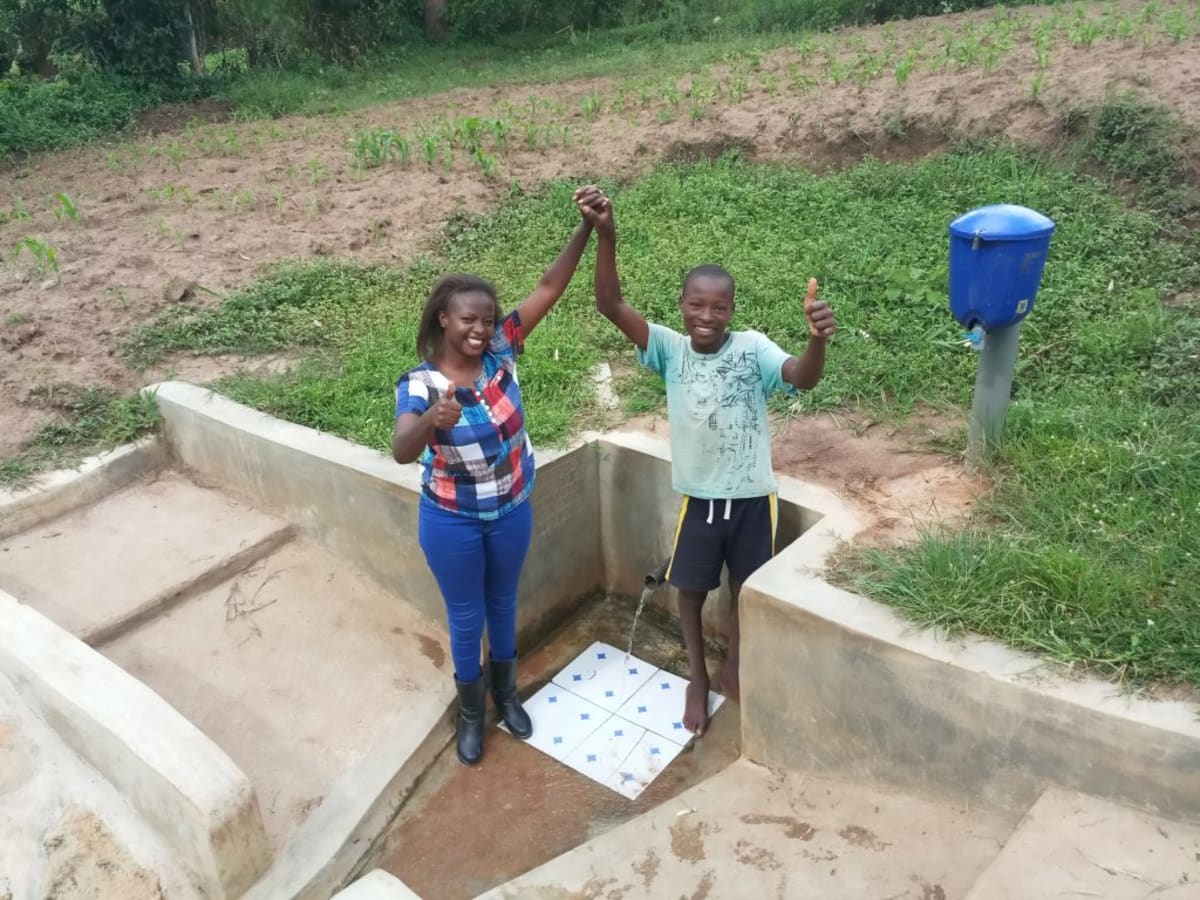This project is a part of our shared program with Western Water and Sanitation Forum (WEWASAFO). Our team is pleased to directly share the below report (edited for clarity, as needed).
Welcome to the Community
There’s no “sleeping in” for those in the village of Mulundu in Kakamega County, Kenya. Not even on weekends! There is much work to be done and these Butsotso people are known as hard workers. They rise quite early to get their children ready and off to school, then head to their farms to grow maize, sweet potatoes, sugar cane, nuts, bananas and vegetables. They keep dairy cattle as well.
Water Situation
The water source for this community is Fanice Mwango Spring. There, the children and women try not to step or fall into the murky water as they scoop it into 20-liter jerry cans which are carried back to the family home for drinking, washing and cooking. The containers are regularly rinsed with water and - on occasion - scrubbed with leaves, pieces of cloth and bar soap.
This unprotected spring has a good discharge rate. By the time of the baseline survey, many people were coming from afar to draw water because the spring had not dried up as was the case with many other springs in the area. Still, the water is regularly contaminated by runoff from farming, human and animal activity, and garbage that is improperly disposed of. The community members do boil the water or add chemicals to it in an attempt to purify it. Still, they report that they have suffered from the contaminated water.
"The spring has never dried up during dry season and it has been serving the people of Mulundu Village since I was married here... The people of this village have been drinking the spring water in this bad condition causing people to suffer from waterborne diseases such as cholera and typhoid. We shall really appreciate if they help us protect the spring so as to get access to clean water," said Mrs. Monica Atira.
Sanitation Situation
Most of the 50 households in Mulundu Village lack their own sanitation facilities, with only 25 – 50% having a latrine. Most pit latrines are made of earthen/clay floor with a superstructure of mud and iron sheets.
"Most of the community people do not have latrines and also sanitation facilities such as dish racks, clotheslines and hand-washing stations. ... I would really appreciate if you talk about hygiene when you come for the training so as to make the people of Mulundu Community aware of it..." said Monica Atira.
Plans: Hygiene and Sanitation Training
Community members will attend hygiene and sanitation training for at least two days. This training will ensure participants are no longer ignorant about healthy practices and their importance. The facilitator plans to use PHAST (Participatory Hygiene and Sanitation Transformation), CLTS (Community-Led Total Sanitation), ABCD (Asset-Based Community Development), group discussions, handouts, and demonstrations at the spring.
Training will also result in the formation of a committee that will oversee operations and maintenance at the spring. They will enforce proper behavior around the spring and delegate tasks that will help preserve the site, such as building a fence and digging proper drainage.
Plans: Sanitation Platforms
On the final day of training, participants will select five families that should benefit from new latrines.
Training will also inform the community and selected families on what they need to contribute to make this project a success. They must mobilize locally available materials, such as bricks, clean sand, hardcore, and ballast. The five families must prepare by sinking a pit for the sanitation platforms to be placed over. All community members must work together to make sure that accommodations and food are always provided for the work teams.
Plans: Spring Protection
Protecting the spring will ensure that its water is safe, adequate and secure. Construction will keep surface runoff and other contaminants out of the water. By volunteering as unskilled laborers, attending trainings, and providing food and accommodation for the skilled artisan, community members confirm their investment in the sustainable management and maintenance of the project upon completion.
Fetching water is predominantly a female role, done by both women and young girls. Protecting the spring and offering training and support will therefore help empower the female members of the community by giving them more time and efforts to engage and invest in income-generating activities.

 Protected Spring
Protected Spring
 Rehabilitation Project
Rehabilitation Project





































